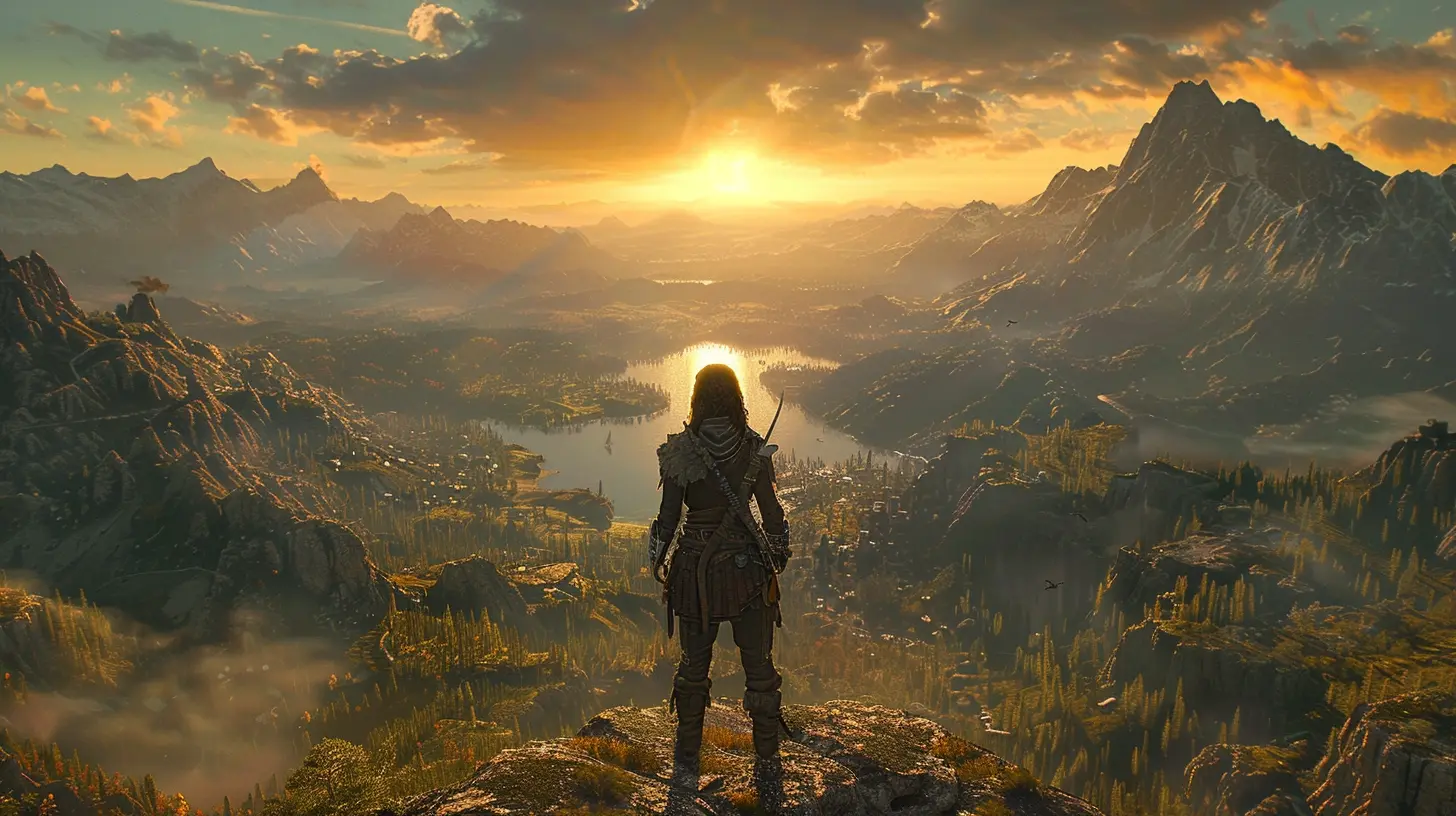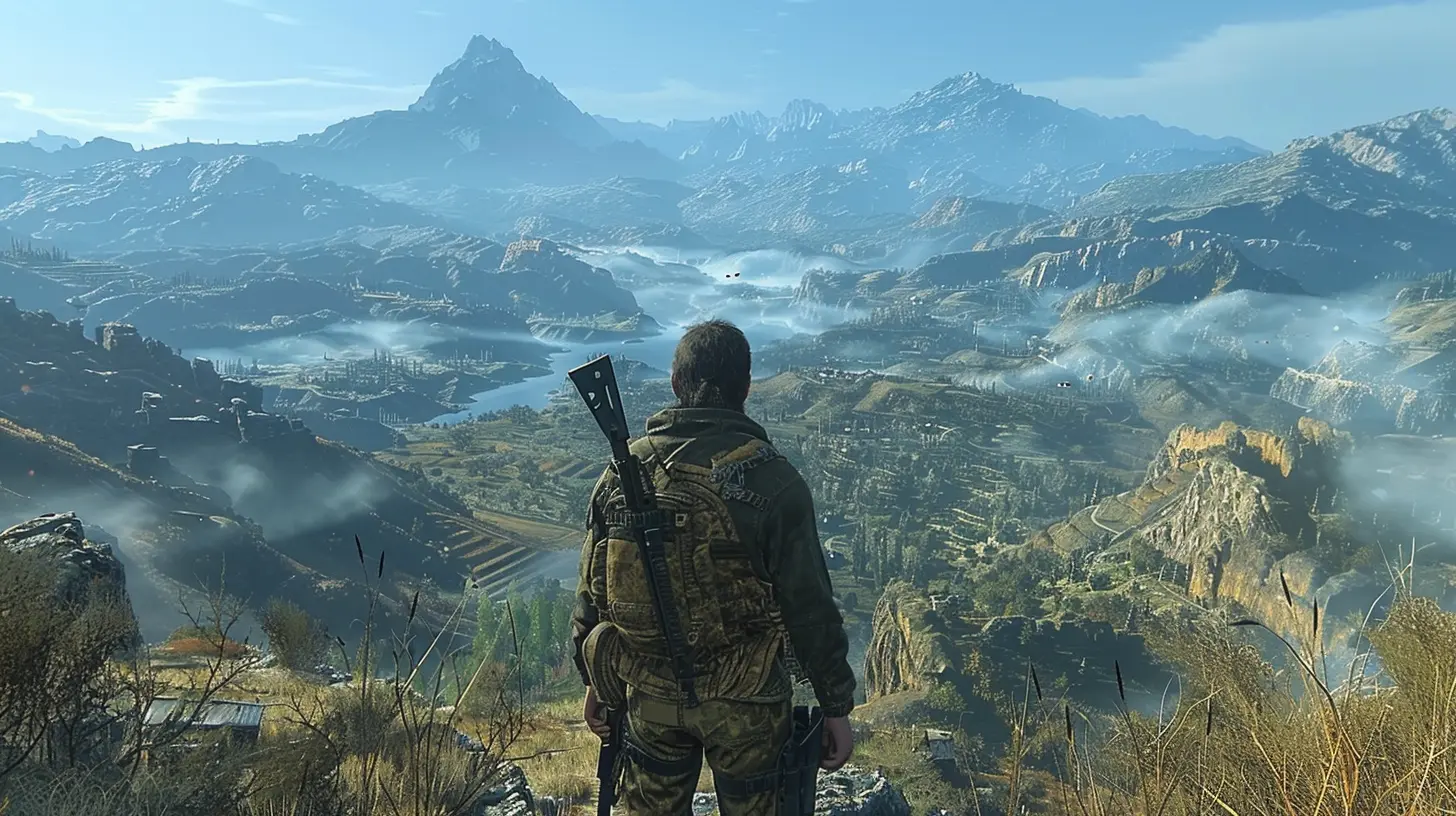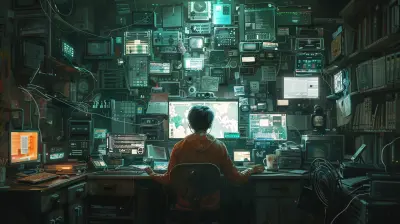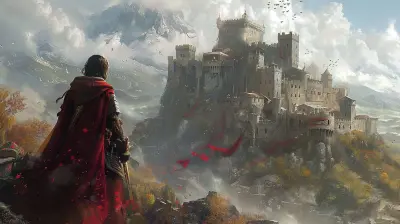Why Open World Games Are Dominating the Gaming Industry
26 July 2025
Ah, open world games—those vast digital playgrounds where you can spend 100 hours doing side quests and still not even touch the main storyline. Why play the actual game when you can chop wood, hunt virtual deer, or build a five-bedroom cabin in the middle of nowhere, right?
Let’s be honest: open world games have exploded in popularity faster than your inventory fills up with useless junk. And there's a good reason for it (besides our unhealthy obsession with virtual freedom). So, grab your sword, polish your mini-map, and let’s dive into why open world games are absolutely dominating the gaming industry like a final boss with unlimited health.
The Illusion of Freedom (And Why We Love It)
Sure, you’re technically saving the world from imminent destruction, but hey, that can wait until you’ve picked every herb in the valley, right? That’s the magic of open world games—they give you the illusion that you’re in charge. Want to ignore the impending apocalypse for 20 hours so you can decorate your in-game house? Be our guest.Open world games give players a kind of digital freedom that makes linear games look like an overbearing teacher with a strict syllabus. There’s no single path, no one-size-fits-all gameplay. You choose your destiny—or at least pretend to.
Immersion Level: 9000
Open world games aren’t just big—they’re massive. These worlds are crafted with such intricate detail that you’d swear someone had to sell their soul to a GPU to render them. And that level of immersion? It’s borderline unsettling (in a good way).Some of these games are so immersive that you forget what the real world looks like. You start referring to real-life locations as “zones” and actual people as NPCs. You might even consider sneaking instead of walking to avoid aggroing your boss at work.
Storytelling That Doesn’t Treat You Like a Toddler
Gone are the days when games held your hand like an overprotective parent. Open world games hand you a map, grunt something vaguely motivational, and shove you into danger. Fun, right?The narrative in these games often unfolds based on player choices. You could be a hero, a villain, or a morally-conflicted potato farmer with dreams of revenge. The story adapts, warps, and reacts to your choices—or your complete disregard for them. It’s storytelling, unleashed.
Side Quests: AKA The Real Game
Let’s be real: nobody fires up Skyrim to finish the main quest. You’re not going to fight dragons. You’re going to climb mountains, adopt dogs, and become the leader of every guild you stumble upon. That’s the real joy of open world gaming.The side quests often have more personality, humor, and emotional depth than some full games. You might start off collecting mushrooms for an old lady and end up uncovering an ancient conspiracy. Surprise!
Graphics So Good You’ll Forget You’re Still in Your Pajamas
If you've ever stopped mid-quest to admire the sunset in Red Dead Redemption 2, you know what I'm talking about. Open world games are eye candy with a side of digital sorcery. From hyper-realistic textures to weather systems that put real meteorologists to shame, these games are visual masterpieces.It’s not just about how far you can see—it's about what you can see. Rustling trees. Dust storms. Water so realistic you’ll want to cannonball into your monitor. These games are designed to make your graphics card cry tears of both joy and agony.
Mods: Because Vanilla Is For Ice Cream
Let’s not pretend we don’t spend hours modding our games to oblivion. The modding community has turned open world games into endless sandboxes of possibility. Want to replace dragons with Thomas the Tank Engine? Sure. Want to turn every NPC into a cheese wheel? Go for it.Modding adds layers of replayability that most linear games can only dream of. It’s like getting an expansion pack every day from a community of over-caffeinated geniuses who probably haven’t seen sunlight since 2016.
Multiplayer Shenanigans & Shared Chaos
Some open world games let you drag your friends into the madness. And what’s better than getting lost in a massive digital world? Getting lost together.Whether it’s ganging up on a rogue enemy, building a base, or just goofing off and seeing who can jump off the highest cliff and survive, multiplayer open world games crank the fun dial to 11. It’s the perfect recipe for chaos, laughter, and possibly destroying friendships over loot.
Replayability That’s Borderline Dangerous
Open world games aren’t just long—they’re infinite. There’s always another quest to do, another cave to explore, another poor NPC to harass with your overpowered spells. You can play these games 10 different times and have 10 different experiences.With branching storylines, random encounters, and ever-changing worlds, you’re basically getting a new game every time you hit “New Game.” Who needs sleep when there’s a procedurally generated dungeon that absolutely must be explored at 3 a.m.?
Open World Games Are A Genre Blender (And We Love Smoothies)
RPG? Shooters? Survival horror? Farming simulator with angry zombies? Open world games blend genres like a NutriBullet on max speed.The result? Games that appeal to nearly every kind of player. You want action? You got it. Stealth? Sure. Want to live as a peaceful blacksmith who avoids all conflict? You weirdo, but yes, go for it.
This genre-mashing makes open world games feel fresh, unpredictable, and—dare I say—spicy.
The Power Fantasy We All Secretly Crave
Let’s admit it—open world games are the ultimate power fantasy. In real life, you can't shout people off cliffs or conjure fireballs (sadly). But in open world games? You’re a one-person apocalypse with a sword, a spellbook, and a suspiciously fast horse.Games like Fallout, The Witcher 3, and Elden Ring give us control in a chaotic world. You’re not just surviving; you’re thriving, looting, and occasionally setting entire villages on fire (you monster).
Technological Advancements Are Feeding The Beast
Thanks to beefy GPUs, SSDs, and next-gen consoles, developers can now load massive maps, detailed landscapes, and dynamic systems in seconds. We're no longer limited to corridor shooters or flat plains that all look the same.AI-driven NPC behavior, realistic day/night cycles, and game worlds that evolve in real-time—it's no wonder open world games are taking over. Technology is finally catching up with the grand ambitions the genre has always had.
Big Studios, Bigger Budgets, Mind-Blowing Games
Let’s not ignore the money train rolling through the gaming industry. The biggest studios are all-in on open world titles because, well, they sell. Games like Grand Theft Auto V and The Legend of Zelda: Breath of the Wild didn’t just make waves—they caused tsunamis.These studios pour millions into world-building, storytelling, and gameplay mechanics to make sure you’re hooked for the next 300 hours. And it works. Oh boy, does it work.
The Indie Crowd Is Getting In On It Too
It’s not just triple-A behemoths soaking up all the glory. Even indie developers are taking their shot at creating expansive worlds. Games like Valheim and No Man’s Sky (after the glow-up) show that you don’t need a billion-dollar budget to build something captivating.In some ways, these smaller studios are even more creative—they take risks, break rules, and twist expectations in ways big studios wouldn’t dare. It’s a win-win for gamers who want something fresh but still love their digital freedom.
YouTubers and Streamers Can’t Get Enough
Let’s face it: streamers and content creators are addicted to chaos—and open world games are the perfect playground. The possibilities are endless, the glitches are hilarious, and the unscripted moments? Gold.A single game can keep a content creator’s channel alive for months. Whether it's speedruns, mod reviews, or just trolling NPCs, open world games give birth to countless viral moments. And guess what? That only fuels the hype train even more.
You’re Not Just Playing—You’re Living Another Life
This might sound dramatic, but it’s true: when you get lost in an open world game, you're not just playing a game. You're becoming someone else. You're stepping into new shoes, facing wild challenges, and living out fantasies.Need to escape real-world stress? No problem. Just hop into your favorite open world, tame a dragon, wear cool armor, and pretend taxes don’t exist. Works like a charm.
TL;DR – Open World Games Are The Gaming Industry’s Favorite Child
They're big. They're bold. They're beautiful. And they let you ride a giant moose into battle while wearing a suit of enchanted potatoes (probably—haven't checked the latest mods). Open world games are dominating the gaming industry because they offer freedom, fun, and endless ways to play.They’re not just games—they’re experiences. And until someone figures out how to live inside one permanently (we’re getting close, let’s be honest), they’re going to keep stealing our time, hearts, and GPU power.
all images in this post were generated using AI tools
Category:
Open World GamesAuthor:

Jack McKinstry
Discussion
rate this article
1 comments
Sabrina McMillen
While open world games offer immersive exploration and player freedom, their dominance raises questions about narrative depth and player engagement, often trading story for sheer scope and content.
August 5, 2025 at 2:41 PM

Jack McKinstry
You raise a valid point. While open-world games excel in exploration and player freedom, balancing narrative depth with expansive content remains a crucial challenge for developers.


